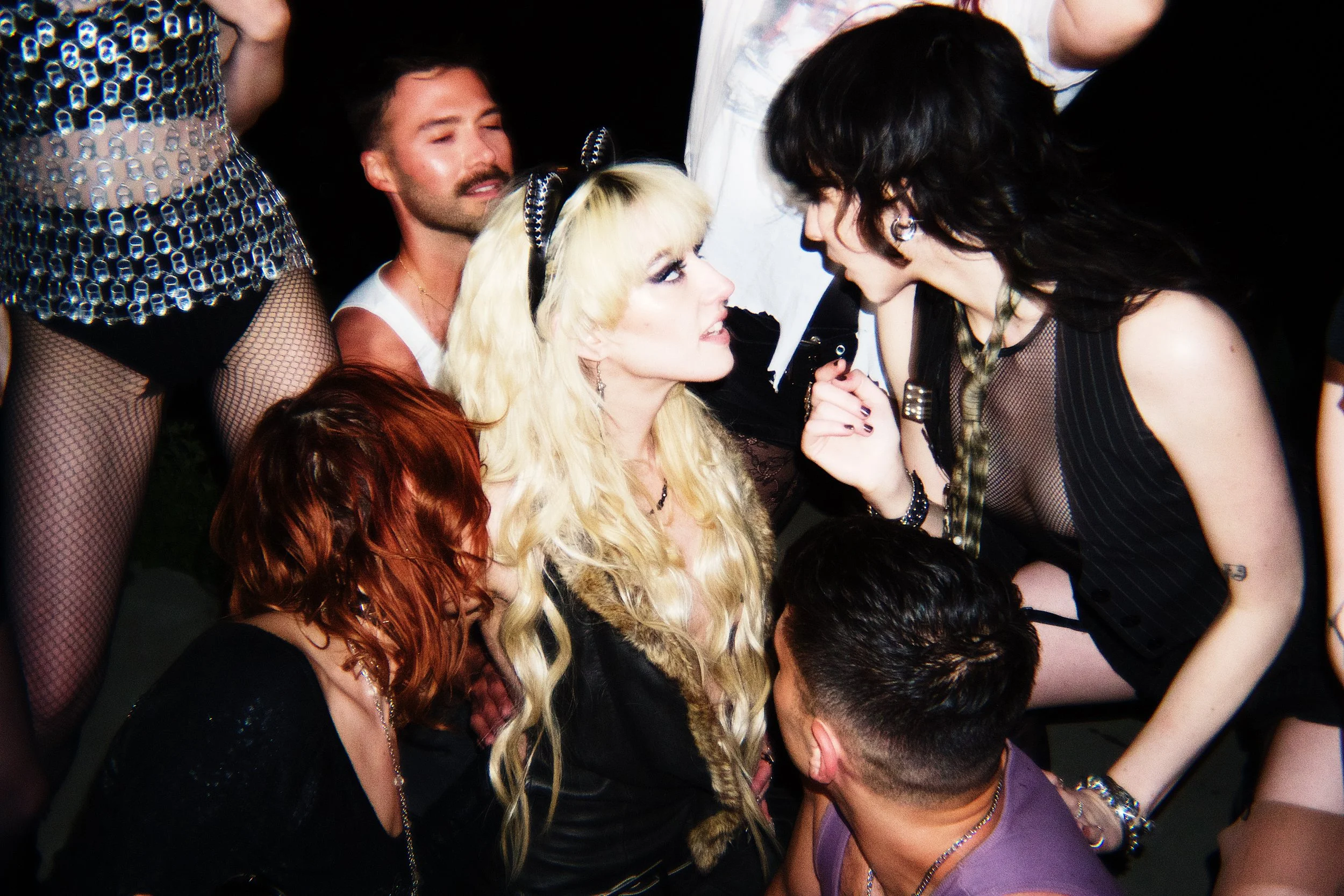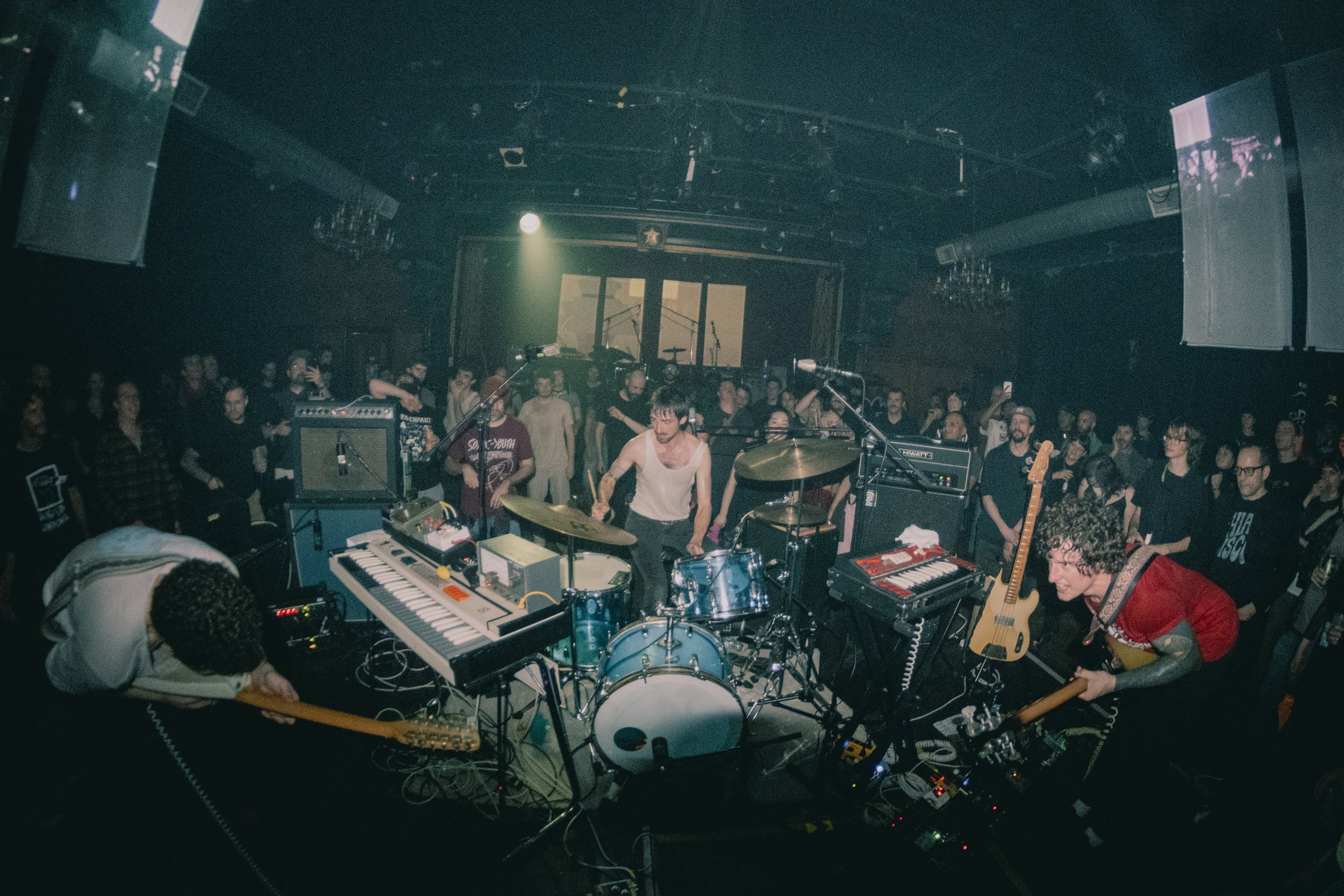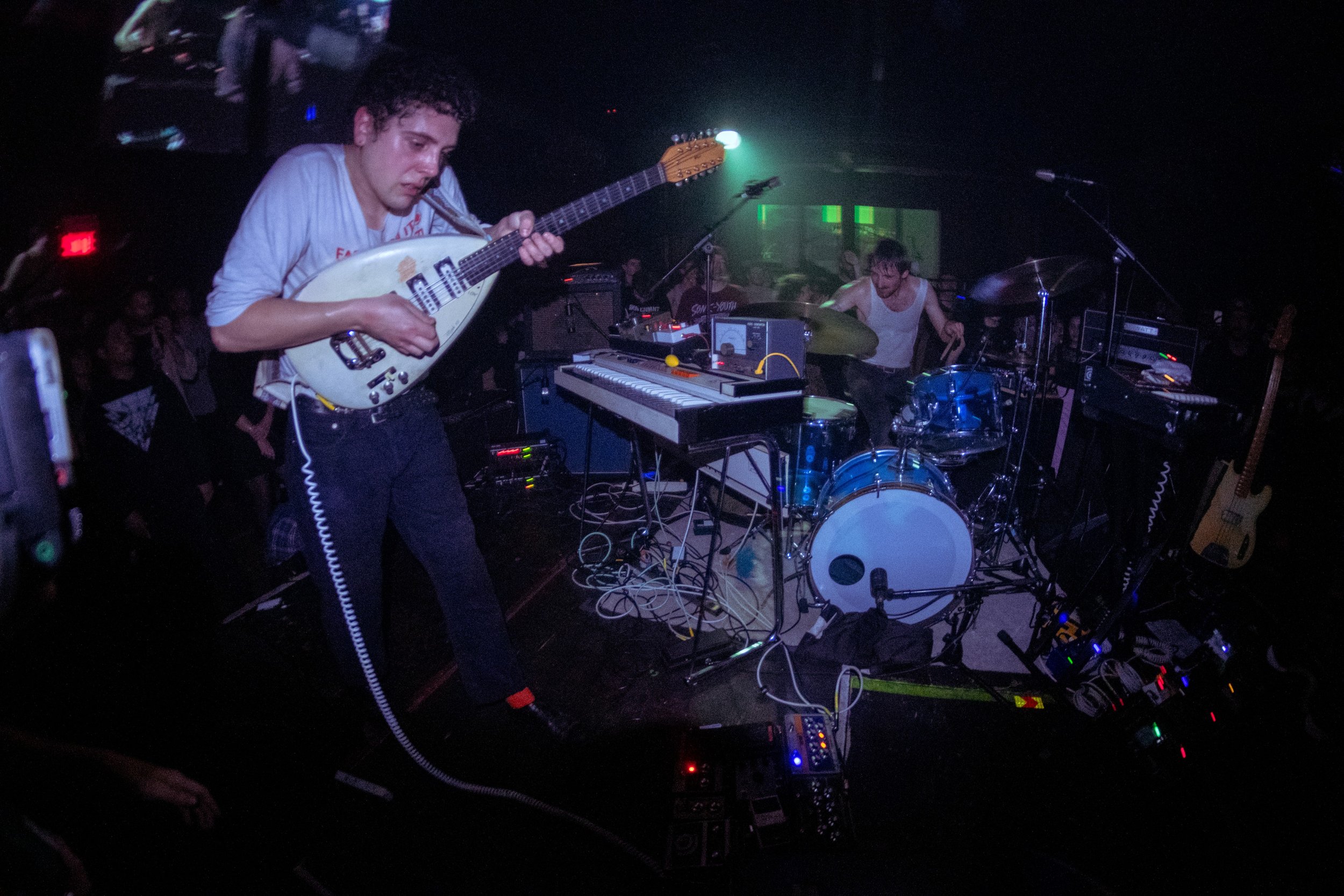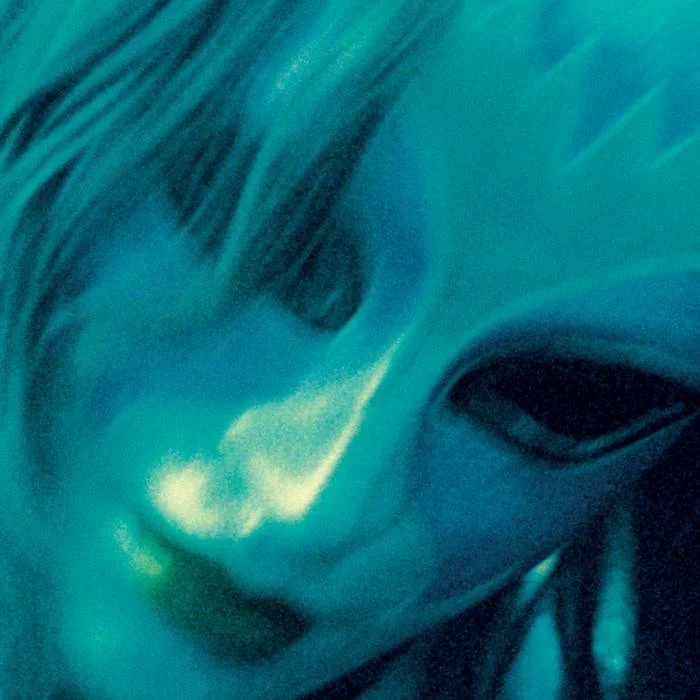Pearly Drops Trace the Glitches of Perfection on "The Voices Are Coming Back" (Music Website)
Sandra Tervonen and Juuso Malin of Pearly Drops by Morrigan Rawson
“For some people, LA can be an influencer world,” Juuso Malin notes, joining me with bandmate Sandra Tervonen over Zoom from Tervonen’s apartment in Helsinki. “A lot of yoga mats, iced lattes, palm trees, and Erewhon. There’s nothing wrong with that… but our idea of LA is probably dark.”
That darkness is the current running through The Voices Are Coming Back, Pearly Drops’ third full-length album (out now via Music Website). Here, Los Angeles isn’t glossy or benevolent; its seduction closes in on you, reflecting back the tarnishes you’d rather not look at.
Across the album’s eleven tracks, Pearly Drops build an impressionistic pop realm steeped in their delicate yet slightly macabre tradition. Tervonen’s marbled cooing swells and tenses, ruminating with an air that is equal parts anguished and curious. The songs move with the steady pulse of alternative rock, lit from within by an almost-sacred electronic glow. Described by the band as a piece of “autofiction,” The Voices Are Coming Back braids idealism with the mundane, folding the Hollywood dream into something more psychological – the narrative becomes less about a destination than an emotional mirage, its story shaped by a tormented exchange of fantasy and fear.
When I ask how the city first struck them in person, Tervonen answers with candour: “Los Angeles feels like a place – when you go there as a musician or an actor, there's this feeling of all [these] possibilities, and you can really make it big, but on the other hand, you can fail miserably. That contrast is everywhere.”
Their tone borders on mythic when they describe Los Angeles, but the curiosity is fitting when you consider the duality. While America is vast, and many people profess their own visions of reinvention, Finland exists on a different spiritual plane – its community safety, its social programs, its steadiness. There is much to love about this framework, but also much to long for: Tervonen and Malin note that, for all its charm, Finland is imbued with a sense of modesty and contentment, which, as artists, can be quietly limiting.
It is LA’s sweltering industriousness, its frantic contortion, that breeds dynamism – anxieties about connection, career, and the state of the world find it harder to lay dormant. Getting outside of their own backyard became the opposite of an escape: it revealed a different version of themselves, one that was expressive, mildly turbulent, and awash with possibilities.
Carrying this version home induced limitless inspiration, but also introspection – for the parts of the city they chose to believe in (and to obscure) each signified different pieces of what they were moving through. “I think that place can be a vessel,” Tervonen contemplates – a way of holding whatever they are too overwhelmed to articulate outright.
Stitching together film scenes and half-remembered feelings, the duo became compelled by the idea of reinvention, but with enough distance to poke at it – for the Hollywood they encountered was nothing like the one on screen. At least, not the polished version most people imagine. If anything, their experience echoed a different cinematic truth entirely. “It really felt like we were inside Mulholland Drive,” Malin remarks – not starry-eyed, but suspended in the atmospheric oddity that the auteur so expertly cultivated.
Beneath the ambitions of the city lay a more destabilizing truth: the high hopes, the harrowing beauty standards, the burnout that breeds malaise. Pearly Drops lean into this tension by letting the fantastical edge of Los Angeles slip into actual fantasy – the siren-like spiral of “Mermaid,” the taunting undercurrent of “Ratgirl,” the moments where dreams don’t just shape the setting but rewrite it entirely. “We are really aware that this LA that we are painting in the album is both the real place—and how we felt there—but also the place that we have always imagined,” Tervonen clarifies.
Another thematic anchor that permeates The Voices Are Coming Back is a little more universal: beauty, and the instinct to disturb it. While augmented by the album’s conceptual location, preoccupations with beauty and the luxury it affords are always on Pearly Drops’ minds as an inseparable beast of the music business. The angsty “Pillow Face” and fuzzed-out “Demonlover” spell this out quite plainly, but almost every song deals with inner discontentment.
Musically, Pearly Drops have curated a strand of "smudged pop” indietronica that enlightened previous releases Call for Help and A Little Disaster. Here, on a record that fumbles around the desire to shapeshift, it would seem that philosophy is even more important. Tervonen underlines a central question: “Where is the place where I can sort of put this little glitch here or there that makes it ugly at the same time?” She is somewhat joking, but the sentiment reads as embedded in their creative process. To a band—a scene—that values grit over gloss, too much beauty could become a liability.
“It comes quite naturally for us to infuse some distortions into music,” Malin elaborates. “I feel like I have to do something.” This friction permeates both lyrics and instrumentation: the fear of collapsing under one’s desire, the connections that disintegrate as a result of, well, human nature. Their songs shimmer, but there is always a twist – the sprite-like curdle of Tervonen’s voice, the murky guitar underbrush, or the overheated synth.
Sometimes, that twist comes in the form of a vapourous wail. Such is the case for Tim Nelson of Cub Sport, who contributed vocals to “Mermaid.” For nearly half of the track, his agile plea emerges with a clean, uncanny precision. “I think [what made it to the song] is the first take,” Malin says. “It’s a really ethereal moment. Obviously, we could have done something more refined or a feature with words, but it just felt right at that moment.”
There are also the arresting voice memos of Tatiana Bruening (or illumitati) which punctuate “Shallow,” “Demonlover,” and “Cocoon & Tatiana’s Lament.” The photographer/musician dwells on a myriad of relatable issues—depression, belonging, and the artist’s peril of creative distaste—and adds a depth of intimacy to the record’s quiet unraveling.
The pair clarify that these striking additions already existed on Bruening’s phone: “They were her diary entries,” Malin recalls. “For me, it comes from the tradition in rap culture where you have the spoken word ‘skits’ on your albums. It just felt interesting to have her on the album doing something she has never done.”
Tervonen also ties Bruening’s vantage point directly to the album’s fixation on appearance: “She’s photographed some really famous people. She has another view of the same theme, and that brought some realism to the album.”
It’s worth noting that Malin and Tervonen don’t try to decode every lyric between them; part of their process is leaving space for mystery, for things that make intuitive sense. Evidently, these remnants from Nelson and Bruening exist less like features and more like echoes of Pearly Drops’ emotional frequency – the muted torment, the subtle pull.
The Voices Are Coming Back will be followed by Pearly Drops’ first headlining tour across North America in 2026. The duo are particularly looking forward to exploring the live architecture of these songs, seeing as how they have only been performed once in London. Tervonen describes the pull of connecting with the audience: “The songs I like [the best] are the most simple ones. I love when I go into a trance, like a shaman. It's easier [for songs where] the lyrics are quite repetitive and I see people feeling it. As an introvert, it's quite hard to go into that place where you can be in front of many people on a pedestal and be comfortable doing it.”
Malin paints a celebratory, almost communal picture of what the tour will entail: “This new album—and the previous albums—translate in a different way because [the songs] are not as ‘closed off’ as on the album. They are more…I wouldn’t say listening parties…but they are parties where we all experience the music together. It's more interactive.” He likens the energy to that of Snow Strippers – charmingly frenetic, an exercise of discovery.
As Pearly Drops continue to sculpt the pensive collection that is The Voices Are Coming Back, the album feels less like a closed chapter than the opening of something stranger. Even now, they hint at music that didn’t make the cut – thoughts that fester like unfinished dreams. “There's definitely some tracks that were left off, or at least quite a lot of lyrics and ideas,” Malin hints. “I feel tied to this album still.”
With another release quietly forming and an era of live exploration ahead, The Voices Are Coming Back doesn’t fade – it lingers, unsettling and luminous. “We’ve realized that we just want to enjoy the show ourselves,” Tervonen smiles. “Life is too short.”
The Voices Are Coming Back
out now via Music Website
1. Delusional On Sunset Blvd
2. Ratgirl
3. Mermaid (feat. Cub Sport)
4. Shallow
5. End Credits
6. Demonlover
7. Deep-fried
8. Pillow Face
9. Cocoon & Tatiana's Lament
10. Silver Lake Mystery Forest
Written and produced by Pearly Drops
Mixed by Juuso Malin at Studio Pearly Drops
Mastered by Joe LaPorta at Sterling Sound
Artwork(s) by Sandra Tervonen at Studio Pearly Drops
Pearly Drops embark on their first headlining North American tour this spring, including a Montreal stop on April 1, following a European run beginning February 27.
Pearly Drops
Instagram | Bandcamp | Spotify
Rebecca Judd is the Editorial & Operations Lead of Also Cool Mag. She is currently based in Ottawa.





































































